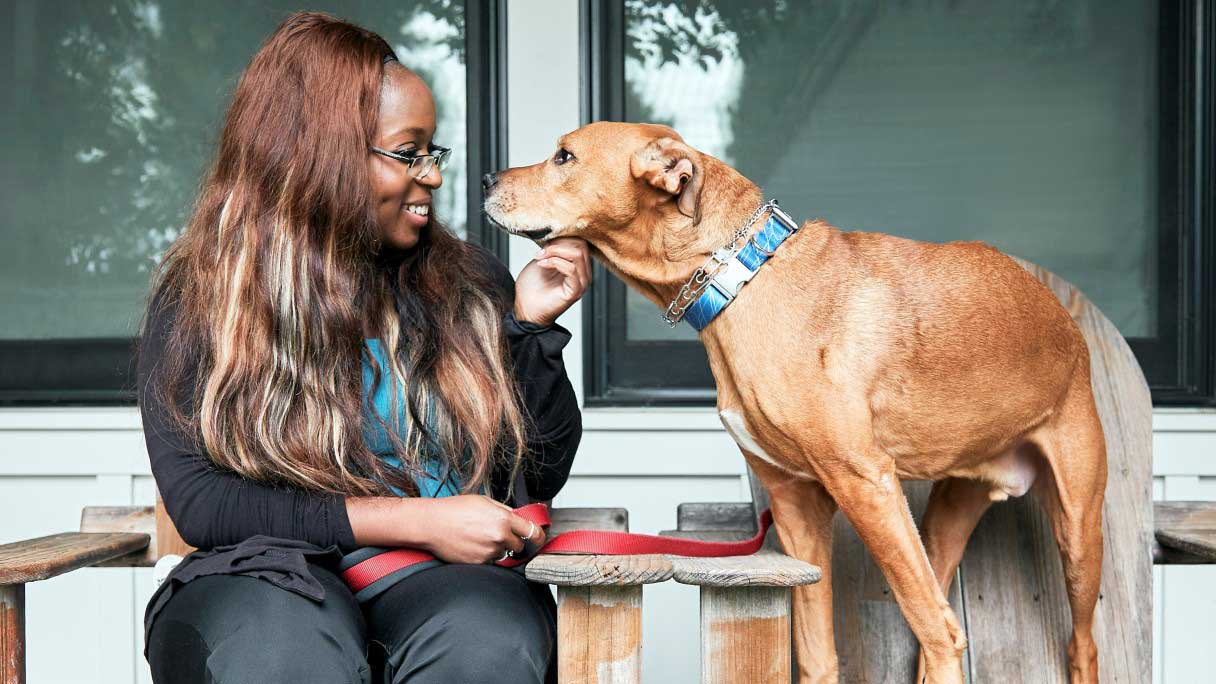Sooner or later, your veterinarian may recommend doing an X-ray on your dog. X-rays are valuable tools for vets that provide them with a snapshot of your pup's inner workings.1 But you might be concerned about the price of dog X-rays and wondering whether they're worth it. Learn more about X-rays for dogs, including how much they cost, why they might be necessary and ways to make them more affordable.
Why Your Dog May Need an X-Ray
X-rays allow your vet to see clearly what they may otherwise have to guess. While X-rays may not be helpful in every instance, they can be an invaluable tool for correctly diagnosing your dog and developing a treatment plan, as well as monitoring how well interventions are working to manage your dog's condition.1
Vets use X-rays for diagnosing and monitoring a wide range of dog health conditions, including:1
- Fractures and injuries. X-rays allow your vet to see both the precise location and the extent of bone damage.
- Joint and hip issues. Your vet can use X-rays to see the condition of joint sockets, which can help determine whether surgery or less invasive forms of treatment are warranted.2
- Spinal issues. X-rays will show your vet any spinal cord abnormalities or injuries.2
- Issues with organs. The size and shape of various internal organs can be seen with X-rays, which can help your vet determine a wide range of possible issues.2
- Foreign objects or blockages. X-rays can help your vet identify and locate intestinal blockages and objects your dog might have swallowed.
- Heart or lung issues. X-rays can help in diagnosing and monitoring heart and lung diseases, as well as respiratory illnesses.
- Cancer. X-rays can identify the size and location of a tumor and let your vet see whether it has spread or whether chemotherapy or other forms of cancer treatment are helping.
In some cases, a CT (computed tomography) scan or another type of imaging, such as an ultrasound or MRI (magnetic resonance imaging), may be better than standard X-rays at providing a clear picture. Areas of the body that might not show up well enough on standard X-rays include:2
- Bladder
- Brain
- Certain abdominal organs
- Inner heart structure
- Lungs
- Some joints
How Much Does a Dog X-Ray Cost?
The national average cost* of dog X-rays is $133 but can range between $102 and $237.3 It can depend on a number of factors, including whether sedation or anesthesia is needed, as well as the size of the dog.3 If you have pet insurance, X-rays may or may not be covered, so be sure to ask your carrier about your specific coverages.
More advanced procedures are more expensive. An MRI for your dog can vary in cost from $1,532 to $3,840. A CT scan typically ranges from $864 to $2,166, and an ultrasound is typically between $348 and $883. Additionally, if needed, sedation for these procedures can run between $80 and $294, depending on the size of the dog and the type of sedation used.3
| Procedure | Average cost |
|---|---|
| Basic X-rays | $133 |
| Sedation | $80 to $294 |
| Wellness exam | $25 to $1864 |
| ER exam | $125 |
Average cost of dog X-rays by state/district
Below is a breakdown of the average cost* of dog X-rays for all 50 states and the District of Columbia:3
| State/District | Average cost |
|---|---|
| Alabama | $115 |
| Alaska | $162 |
| Arizona | $136 |
| Arkansas | $115 |
| California | $164 |
| Colorado | $134 |
| Connecticut | $137 |
| Delaware | $132 |
| District of Columbia | $173 |
| Florida | $132 |
| Georgia | $120 |
| Hawaii | $197 |
| Idaho | $135 |
| Illinois | $132 |
| Indiana | $121 |
| Iowa | $116 |
| Kansas | $118 |
| Kentucky | $123 |
| Louisiana | $121 |
| Maine | $135 |
| Maryland | $144 |
| Massachusetts | $163 |
| Michigan | $120 |
| Minnesota | $125 |
| Mississippi | $109 |
| Missouri | $116 |
| Montana | $130 |
| Nebraska | $119 |
| Nevada | $134 |
| New Hampshire | $141 |
| New Jersey | $150 |
| New Mexico | $120 |
| New York | $146 |
| North Carolina | $125 |
| North Dakota | $122 |
| Ohio | $122 |
| Oklahoma | $115 |
| Oregon | $142 |
| Pennsylvania | $128 |
| Rhode Island | $139 |
| South Carolina | $123 |
| South Dakota | $118 |
| Tennessee | $120 |
| Texas | $123 |
| Utah | $131 |
| Vermont | $141 |
| Virginia | $130 |
| Washington | $150 |
| West Virginia | $118 |
| Wisconsin | $124 |
| Wyoming | $124 |
A lot of variables influence the cost of X-rays for dogs, including:
- Region. The regional location where your vet practices can determine what they charge for office visits and various procedures. For instance, a vet practicing in New York City or San Francisco will likely charge significantly more than a Midwestern small town vet.
- Vet clinic. Even within the same location, prices can differ from one veterinary clinic to the next. The type of clinic also matters. A 24-hour emergency animal hospital is likely to be more costly than a regular vet.
- Location of the X-ray. Dental X-rays or leg injuries tend to be straightforward. But if the issue is in a hard-to-reach location, it will take more time to get your dog positioned correctly and get the necessary images that show the vet what they need to see.
- Number of X-rays needed. Your vet might need to take multiple images from different positions to get a clear picture of what's going on inside your dog. Also, certain health conditions, like a tumor or an enlarged heart, might require multiple X-rays over time to monitor your dog's condition.
- Type of X-ray. Whether your dog needs a basic X-ray, a contrast X-ray or a CT scan will significantly impact the cost.
- Sedation. Most dogs don't need sedation to be x-rayed. But dogs who are anxious or aggressive toward the veterinary staff might need to be sedated to keep them still enough to get useful images.
- The size of your dog. Smaller dogs will need smaller doses of sedatives and any contrast agents used than larger dogs, which can affect the overall cost.
Does Pet Insurance Cover Dog X-Rays?
Pet insurance may be able to reimburse you for some or all of the cost of dog X-rays. Whether or not pet insurance will cover X-rays for your dog in your specific case depends on the details of your pet insurance policy. Many pet insurance providers have waiting periods after joining before you can use the benefits, so it's best to purchase pet insurance before you need it.
What to Expect at Your Dog's X-Ray
X-rays are taken inside a special room designed to protect people and pets in the surrounding area from radiation exposure. Because of any potential negative effects from the radiation, you won't be allowed to accompany your dog inside the X-ray room while the X-ray images are taken. The veterinarian and technician doing the X-rays wear protective equipment to reduce their exposure to radiation.2
Radiation isn't the only reason you can't go with your dog or hold them during the X-ray procedure. Your dog has to lie still on a table in multiple positions in order for the vet to get useful images. Your presence might make it harder to get your dog to hold still and allow themselves to be handled. Occasionally, agitated or uncooperative dogs need to be sedated during the procedure.1
Potential Complications and Side Effects
X-rays use ionizing radiation, which can potentially damage DNA and increase the chance of developing cancer and other health issues.5 This is generally a minimal concern but one that can increase with higher dosages of radiation and repeat exposure.5 X-rays for dogs typically use a very low dose of radiation and are generally considered harmless.1
When it comes to having your dog x-rayed, you've got to weigh the potential effects of a small increase of radiation exposure on their health against the benefit of getting a correct diagnosis — and the right treatment — for your pup.
CareCredit Credit Card Financing for Dogs
Taking good care of your pet's well-being from nose to tail is essential. Make sure to stay up to date on their regular checkups at the vet to help keep your pet happy and healthy for a lifetime of love. You can use your CareCredit credit card for pet care throughout the year for routine veterinary services as well as emergencies and surgeries.** Use our Acceptance Locator to find a veterinarian near you that accepts CareCredit.
CareCredit is there for you and your pet every step of the way; continue your wellness journey by downloading the CareCredit Mobile App to manage your account, find a provider on the go and easily access the Well U blog for more great articles, podcasts and videos.
In addition to pet care, you can also use your CareCredit credit card for dentistry, cosmetic, vision, hearing, health systems, dermatology, pharmacy purchases, spa treatments and so much more within the CareCredit network. How will you invest in your health and wellness next?
Author Bio
Jean Marie Bauhaus is a freelance writer and novelist who has been writing pet content since 2013. Her work has appeared on Forbes.com, Hill's Pet, Chewy, AKC.org and more.







